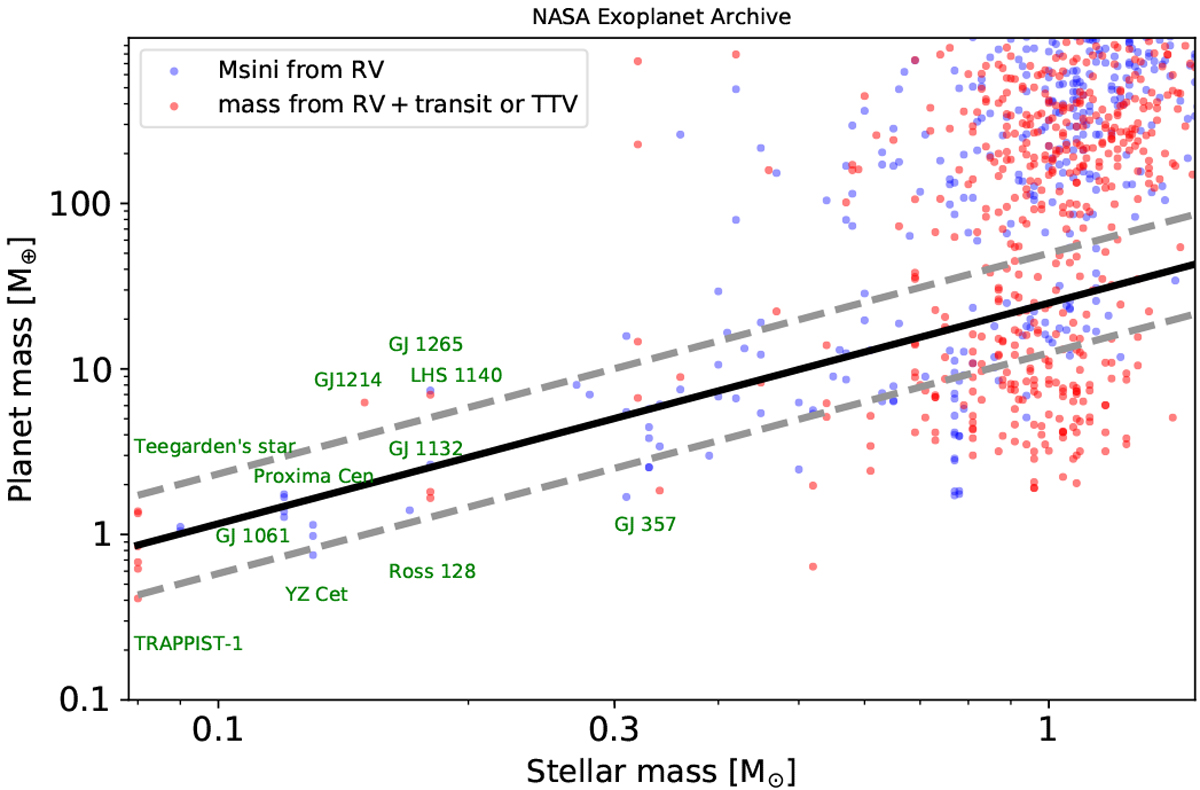Fig. 1

Observed planet mass vs. stellar mass. The blue dots are the planets only detected by radial velocity surveys with a low mass limit, and the red dots are the planets with true masses either from a combined radial velocity and transit surveys, or from transit timing variation measurements. The selected planets also have relatively precise stellar mass measurements (Δϵ = ΔM⋆∕M⋆ ≤ 20%). The black line is adopted from Eq. (39), indicating the pebble isolation mass (see details in Sect. 5), and the gray lines show a factor of two variation. The masses of planets seem to correlate with the masses of their central stars. The names of typically planetary systems around very low-mass stars are labeled in green, including TRAPPIST-1, (Gillon et al. 2016), Proxima Centauri (Anglada-Escudé et al. 2016), Ross 128 (Bonfils et al. 2018), LHS 1140 (Dittmann et al. 2017), YZ Cet (Astudillo-Defru et al. 2017), Teegarden’s star (Zechmeister et al. 2019), GJ 1214 (Charbonneau et al. 2009), GJ 1265 (Luque et al. 2018), GJ 1132 (Berta-Thompson et al. 2015), GJ 1061 (Dreizler et al. 2019), and GJ 357 (Luque et al. 2019).
Current usage metrics show cumulative count of Article Views (full-text article views including HTML views, PDF and ePub downloads, according to the available data) and Abstracts Views on Vision4Press platform.
Data correspond to usage on the plateform after 2015. The current usage metrics is available 48-96 hours after online publication and is updated daily on week days.
Initial download of the metrics may take a while.


